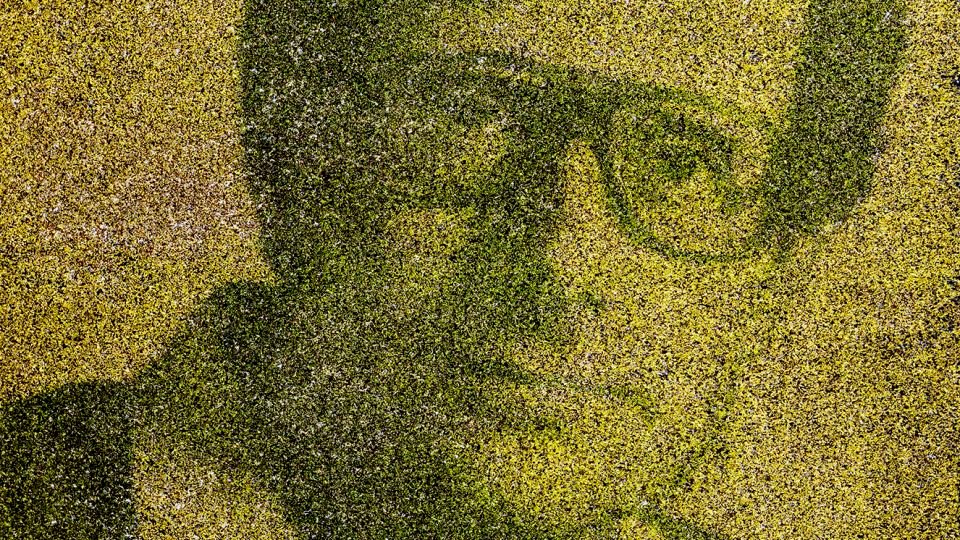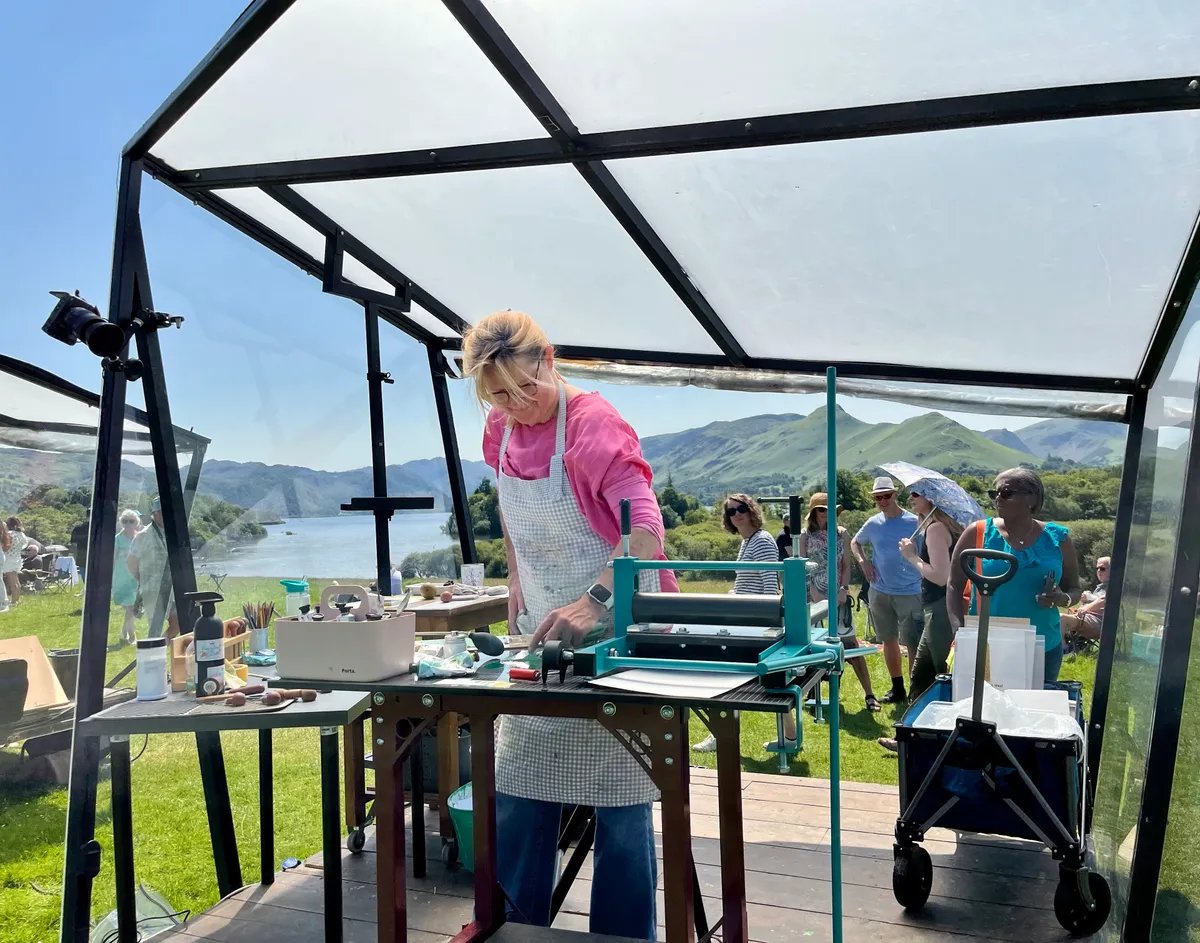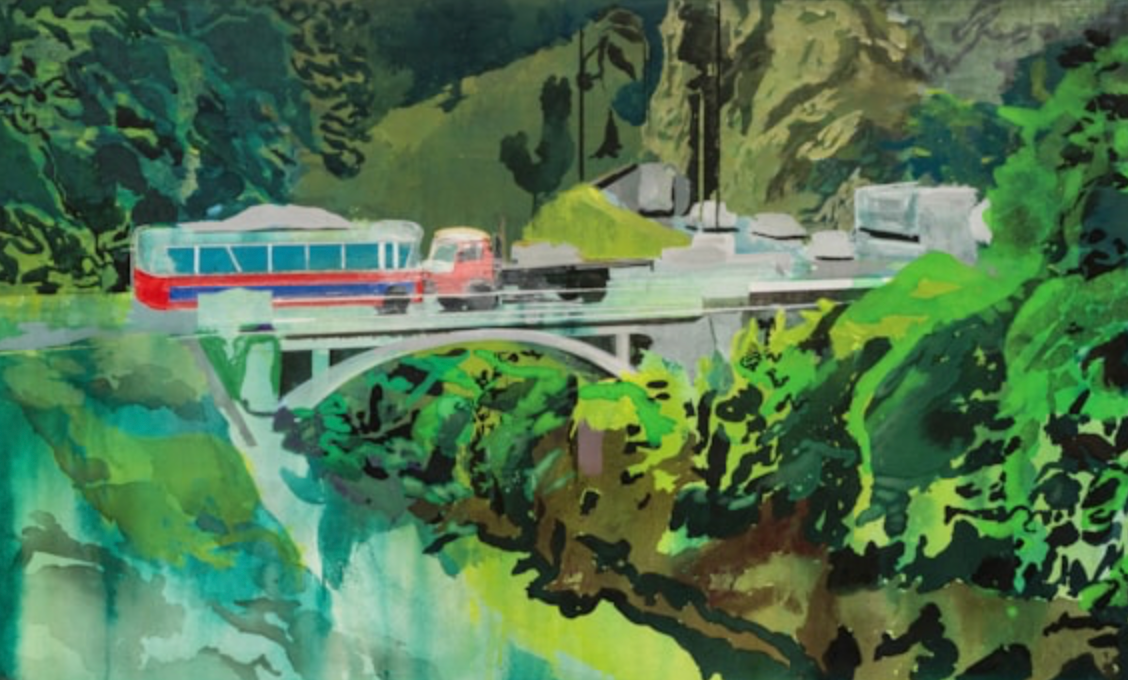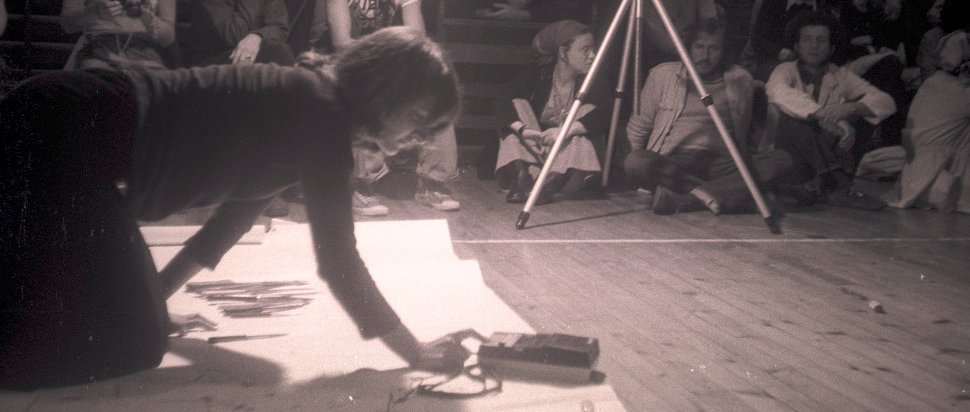unknown content item
–
Spanish artist Almudena Romero knew from a young age that she loved plants: “I must have been about four or five – my granny would call and say, ‘what do you want for your birthday?’ And I’d be like, an olive tree.”
Now, with her inclusion in exhibitions in London (at the Saatchi Gallery) and Paris (Albert Khan Museum), she’s showcasing her unique plant-based art that’s pushing audiences to question their hyper-consumerism whilst showing that it’s possible to create art in an eco-friendly manner.
In her four-chapter series called “The Pigment Change,” rather than developing photos on photographic paper, she prints them directly onto plants.
“I just put a negative on top of the leaf and leave it to the sunlight, and then the image gets recorded on the leaf,” Romero said. “But I also print on living plants using a digital projector, and the plant makes photosynthesis with the light from the projector and records an image.”
In a chapter from that series, called “Family Album,” she spreads watercress seeds on a stretched canvas, and lets them grow in the dark, before projecting a negative onto the watercress.
“The parts that receive more light produce chlorophyll, hence the dark green tones, and the parts that receive less light remain yellow, pale,” she said. “[It’s] exactly like in a photographic darkroom. But instead of having an enlarger, I have a projector, and my watercress canvas is my photo paper. That’s how I grow photographs.”
The chlorophyll process adopted by Almudena was popularized in the 90’s by Heather Ackroyd and Dan Harvey, who projected photographs onto grass using a negative and light cast by a projector bulb. Allegedly, the British artists came up with the technique when they noticed random outlines of a ladder cast onto one of their grass installations.
Despite being an innovative process, it wasn’t simple. It required a lot of space and preparation. Later, Artist Binh Danh enhanced this method by using photosensitive materials from plants, securing a positive straight into a leaf and enabling sunlight to bleach the photo onto its surface.


Learning from Plants
Romero, who was raised in Madrid, used to spend holidays on her grandparents’ avocado farm in Valencia, in eastern Spain. Breathing fresh air, picking fruit, and learning from her grandmother about plants during her formative years instilled in her the eco-conscious values she embraces today.
“When you grow close to nature, it becomes a really important thing in your life,” she said. “Plants for me are important, partly because of the legacy of my family and because as a photographic material, it’s impressive in quality.”
But she concedes that her eco-friendly techniques wouldn’t work for all artists. “It is a niche because it produces ephemeral pieces, so it’s a lot more difficult to be financially sustainable when your art is ephemeral, but I guess it’s also depending on how you understand life and what you want to do with your practice,” she explained.
The 38-year-old is not alone in her love for plants. According to a survey published by consumer analytics platform CivicScience, more than 200 million Americans were houseplant owners in 2020. In the past few years, Millennials have embraced the “plant-parent” craze, sharing photos and care tips on social media. But for Romero, plants are much more than something to look after: they’re beings we can learn from.
“Plants have been [around] for way longer than us on the planet and they have succeeded in doing that without causing any extinction,” she said.
Romero points to plants in deserts and arid environments that have evolved strategies that limit reproduction, saying they allow her to better argue that it’s not an “unnatural behavior” to choose to be child-free. “I am a person who doesn’t want to have children because of climate change,” she explained. “I simply don’t feel comfortable.”
In her series “The Pigment Change” she questions whether maternity or parenthood is something “beyond one’s control” or a “question of will,” reflecting on plants’ selective reproduction strategies and opening a broader reflection on procreation.
In 2020, she won the BMW Residency Award for the project and her work was exhibited at the renowned photography festival Rencontres d’Arles, in France.


It’s not only about what we can learn from plants, though. For the Spaniard, we should also consider non-anthropocentric ethics (a philosophical perspective which challenges the idea that humans are the most important beings, emphasizing the value of all living organisms and ecosystems), seeing other species as having their own agendas and intentionality.
The artist explained that she sees photoperiodism (the way plants respond and adapt to light changes throughout the seasons) as a performance by plants. “Why do we tend to think that we only have these capacities as humans?” said Romero. “The problem is the perspective that we have that we think that we are very different until science proves the opposite.”
Studies have shown that plants can be more complex than we may think. According to an article published in The Plant Journal, plants like Arabidopsis feel stressed when touched, which stunts their growth, while in 2019, another research group found that beach evening-primrose respond to the sound of pollinators.
Now, Romero is working on her next project, which is due to be completed by June 2025. Commissioned by France’s National Research Institute for Agriculture, Food and Environment, the size of the work is planned to be bigger than a stadium.
“I’m working in farming what will be the largest photographic artwork ever produced. We are going to farm an image of 30,000 square meters,” she said.
Romero is collaborating with scientist Nicolas Langlade, with the help of AI, to use genetically different wheats and grasses to achieve a color palette sufficiently rich to produce a distinguishable image.
The artwork reflects on the human relationship with land and plants, our impact on the environment and our interdependency with nature. For Romero, this art-science project is like coming full circle. “It’s a combination of my family’s background because we are going to farm it,” she said. “I love my passion for plant photography, so I’m really happy about it.”
“Metamorphosis” is showing at the Saatchi Gallery, London, until the 28 July.
“Natures Vivantes” is showing at the Albert Khan Museum, Paris, until the 31 December.
For more CNN news and newsletters create an account at CNN.com






